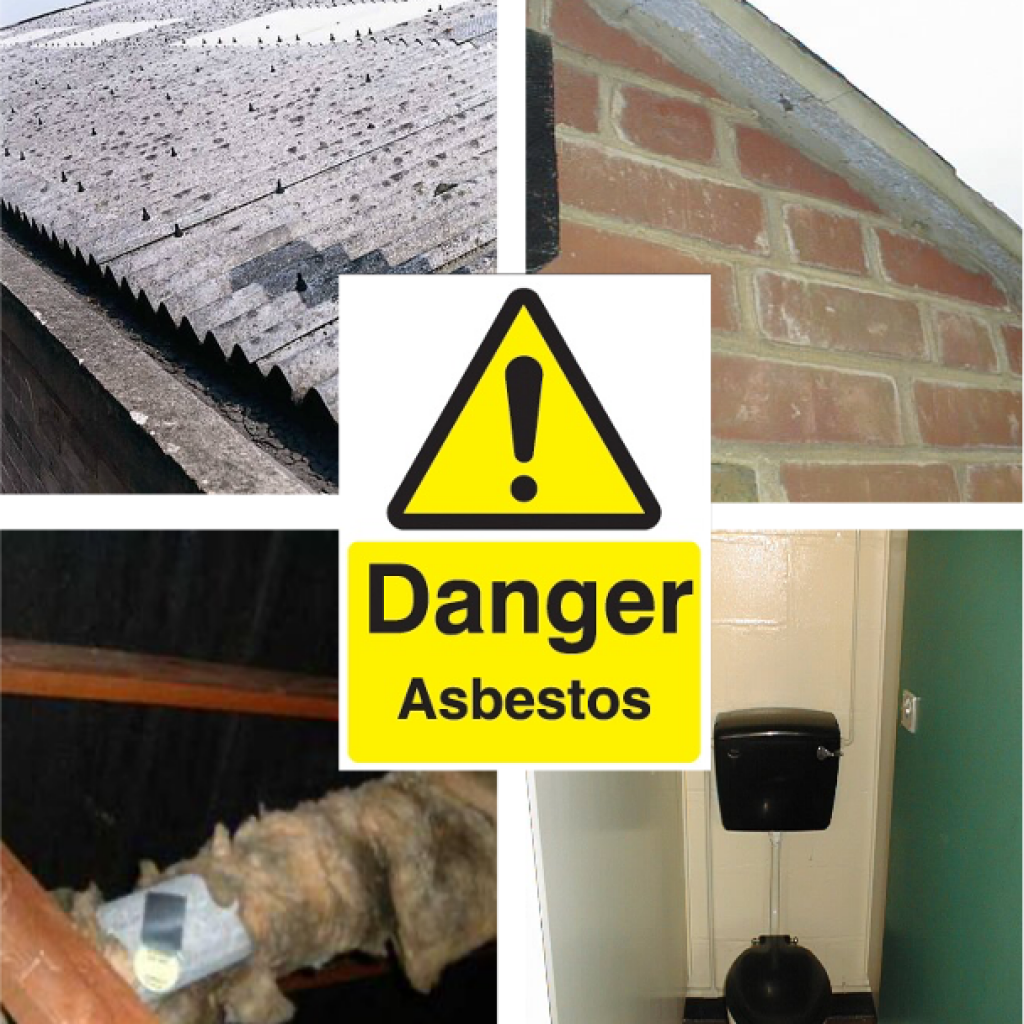What is asbestos and why is it so dangerous?
We’ve all heard of asbestos and that it can be deadly to health but what is asbestos and what industries have used asbestos over the years?
Asbestos is a group of six natural minerals made up of heat-resistant fibres and were popular because they could be used in a wide range of industries and added to cloth, paper, cement, plastic and other materials to make them stronger.
According to the Health and Safety Executive in the UK, asbestos can potentially be found in any building constructed before the year 2000 and accounts for 5,000 deaths in this country every year.

Asbestos has been used widely in insulation products but it’s now known that if asbestos dust is inhaled the fibres can become trapped in the body causing inflammation and scarring in the lungs over years, possibly leading to deadly diseases like the rare but aggressive cancer asbestosis. There is no way to reverse the terrible damage it causes.
The three most common types of asbestos fibres used in the UK were brown (known as crocidolite), brown (amosite) and white (chrysotile).
Microscopic asbestos fibres are easily inhaled once they become airborne which is why products containing asbestos must never be disturbed. Once this fine dust containing asbestos fibres is triggered it can quickly get into the lungs and cause damage over time.
The Government treats the danger so seriously that it passed legislation, The Control of Asbestos Regulations 2012, with a set of strict regulations and one of them is that anyone likely to disturb asbestos during their work must receive the correct level of training to keep themselves and others safe.
The regulation states: “Training is mandatory for anyone liable to be exposed to asbestos fibres at work.”
The non-profit UK Asbestos Training Association (UKATA) – the largest in the country which sets the highest standards – is dedicated to saving lives from asbestos and has trusted training companies that now do an asbestos awareness course for just £25 per person.
One of its leading asbestos awareness training members in the north of England is the Aven Partnership based in Huddersfield, West Yorkshire, which trains huge organisations such as local councils down to small and medium businesses.
If asbestos inside buildings is left alone it poses no real danger. But when it’s damaged or disturbed tiny asbestos fibres can be released into the air and enter people’s lungs when they breathe in. The asbestos fibres can then damage the lungs and their lining.
How was asbestos used?
Asbestos was used in more than 4,000 products and before its dangers were known it was often used in buildings for insulation, flooring, roofing, and was sprayed on ceilings and walls. Its use is now banned in the UK, but buildings constructed before the year 2000 may still have asbestos in them.
People who worked in industries such as construction, ship-building, vehicle brake pad manufacturers, textile industry when making heat-resistant products such as fire blankets, ceiling and floor tiles, insulation and pipe-lagging industries may have been exposed to asbestos, especially from the 1970s to the 1990s.
Asbestos was often sprayed on steel columns, aluminium sheets and other metal structures that needed to withstand high temperatures.
Asbestos was used in lots of public buildings such as hospital and schools and there are increasing numbers of nurses, teachers and former pupils suffering with severe asbestos-related illnesses.
Today people are only likely to come into contact with asbestos if it is disturbed or damaged in old buildings which is why the £25 asbestos awareness course from the UK Asbestos Training Association (UKATA) and run by Aven Training in Huddersfield, West Yorkshire, is so important.
What is asbestosis and who can suffer from it?
People most at risk are those who worked in industries that used asbestos many years ago as they will have breathed in the tiny asbestos fibres which will have caused damage to their lungs over several years, sometimes leading to the aggressive cancer called asbestosis.
It is called this because it’s caused only by exposure to asbestos.
But people who have lived with a worker exposed to asbestos can also get it. The may well have had asbestos fibres on their working clothes and family members could have breathed them in. There are cases of wives of workers suffering from asbestosis after washing their husband’s work overalls. It’s also thought that workers coming home covered in asbestos on their overalls and then hugging their children or wives could have exposed them to it. This is known as secondary or shakedown exposure.
Although most asbestos diseases require substantial exposure to asbestos over a long period of time there is no safe level of asbestos exposure.
Or, as Dr Robin Rudd, a medical expert in asbestos cases and mesothelioma, puts it: “Mesothelioma can occur after a low level of asbestos exposure and there is no threshold dose of asbestos below which there is no risk.”
Asbestos-related diseases can take anywhere between 10 and 50 years to develop and then surface as a serious or terminal illness.
Nowadays, the people most at risk are those who breath in the tiny asbestos fibres if asbestos has been disturbed which is why it MUST be left alone and, if it needs to be removed, only use a recognised asbestos removal specialist.
Asbestosis is a rare, long-term lung condition which usually develops around 20 to 30 years after people have breathed in asbestos dust.
Asbestos fibres can get lodged inside lungs, causing scarring and thickening around air sacs, meaning it’s more difficult for oxygen to reach the blood stream.
The scarring causes lungs to shrink and harden, meaning they can’t hold as much air as they used to and the person becomes short of breath.
Other symptoms include a persistent cough, a wheeze, fatigue or extreme tiredness, pain the chest or shoulder and, in more advanced cases, swollen fingertips.
There is no cure for asbestosis and it’s impossible to reverse the lung damage.
But, not everyone who has been exposed to asbestos will go on to suffer from asbestos. There are other conditions caused by exposure to asbestos.
Inside your chest there are two thin layers of cells called the pleura or pleural membrane. Each layer is about as thin as the skin of a balloon with the inner layer covering the lungs and the outer layer lines the inside of the rib cage.
If people have been exposed to asbestos it’s common for areas of the pleura to become thickened. These areas are called pleural plaques.
It’s thought that around 36,000 to 90,000 people develop pleural plaques in the UK every year but they are considered harmless and many people in the UK have them, often without even knowing about it.
Asbestos can also cause a severe disease called Mesothelioma, a type of cancer that affects the pleural membrane around the lungs. Like asbestosis, symptoms of mesothelioma only develop many years – usually several decades – after being exposed to asbestos.
The condition is slow to appear and then quick to progress and some of the main symptoms are breathlessness, coughing, weight loss, persistent pain in the chest or shoulder.
As mesothelioma develops it often causes fluid to build up in the chest. This is known as a pleural effusion which takes up some of the space inside the chest, in effect squashing the affected lung, restricting its ability to expand causing the suffered to feel constantgly out of breath.
To organise a UKATA Asbestos Awareness Course with Aven Training contact Nigel Chilvers on 07779 982188 or email nchilvers@aventraining.com

 D5 Creation
D5 Creation